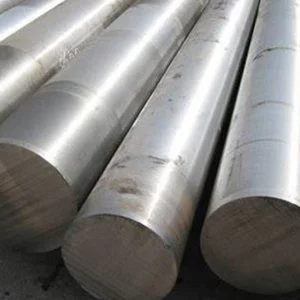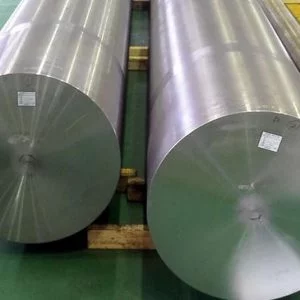Introduction

In the world of industrial manufacturing, material selection plays a pivotal role in determining the performance, durability, and cost-effectiveness of products. Among various materials, 8620 alloy steel stands out for its unique combination of properties that make it highly suitable for a range of applications. This blog explores the benefits of using 8620 alloy steel in industrial manufacturing, delving into its properties, applications, and advantages over other materials.
What is 8620 Alloy Steel?
8620 alloy steel is a low-alloy steel that is known for its versatility and robust performance. It contains a mix of chromium, nickel, and molybdenum, which enhance its mechanical properties and make it suitable for various industrial applications. This steel is commonly used in applications requiring good wear resistance, toughness, and machinability.
Composition of 8620 Alloy Steel
| Element | Composition Range (%) |
|---|---|
| Carbon (C) | 0.18 – 0.23 |
| Manganese (Mn) | 0.60 – 0.90 |
| Chromium (Cr) | 0.40 – 0.60 |
| Nickel (Ni) | 1.00 – 1.30 |
| Molybdenum (Mo) | 0.15 – 0.25 |
Benefits of Using 8620 Alloy Steel
High Strength and Durability
8620 alloy steel is renowned for its high strength and durability. The presence of chromium, nickel, and molybdenum in its composition enhances its tensile strength and impact resistance. This makes it ideal for applications where high load-bearing capacity and resistance to wear are essential.
Strength and Durability Comparison:
| Steel Grade | Tensile Strength (MPa) | Yield Strength (MPa) | Hardness (Brinell) |
|---|---|---|---|
| 8620 Alloy Steel | 620 – 850 | 415 – 655 | 190 – 250 |
| 1045 Steel | 600 – 780 | 350 – 500 | 170 – 230 |
| 4140 Steel | 680 – 850 | 450 – 650 | 200 – 250 |
Excellent Machinability
One of the key benefits of 8620 steel is its excellent machinability. The steel is relatively easy to cut, drill, and shape, which simplifies the manufacturing process and reduces production costs. This property is particularly advantageous for producing complex parts and components.
Superior Hardenability
8620 alloy steel has superior hardenability, meaning it can achieve high hardness levels through heat treatment processes such as carburizing. This property enhances its wear resistance and makes it suitable for components that undergo significant surface stress.
Versatile Applications
The versatility of 8620 steel allows it to be used in a wide range of industrial applications. It is commonly used in the automotive industry for gears, shafts, and crankshafts, as well as in the aerospace industry for structural components and machine parts.
Application Examples:
| Industry | Application | Benefits |
|---|---|---|
| Automotive | Gears, shafts | High strength, wear resistance |
| Aerospace | Structural components | Durability, impact resistance |
| Machinery | Machine parts | Machinability, toughness |
Cost-Effectiveness
Despite its high performance, 8620 steel is relatively cost-effective compared to other high-strength materials. Its balance of properties offers good value for money, making it a preferred choice for many industrial applications.
Improved Fatigue Resistance
8620 alloy steel demonstrates good fatigue resistance, which is crucial for components subjected to cyclic loading. This property helps in extending the service life of parts and reduces the likelihood of premature failure.
Compatibility with Heat Treatment
The steel’s compatibility with various heat treatment processes allows for customization of its properties to meet specific requirements. Heat treatments such as carburizing and quenching can be applied to enhance its hardness and wear resistance.
Processing and Heat Treatment of 8620 Alloy Steel
Carburizing
Carburizing is a heat treatment process used to increase the surface hardness of 8620 steel. This process involves introducing carbon into the surface layer of the steel, followed by quenching and tempering to achieve the desired hardness.
Quenching and Tempering
Quenching and tempering are used to improve the overall toughness and strength of 8620 steel. After heating to a high temperature, the steel is rapidly cooled (quenched) and then reheated (tempered) to relieve internal stresses and enhance its mechanical properties.
Annealing
Annealing is a heat treatment process used to soften the steel and improve its machinability. This process involves heating the steel to a specific temperature and then slowly cooling it to reduce hardness and improve ductility.
Advantages Over Other Materials
Comparison with Carbon Steels
Compared to standard carbon steels, 8620 alloy steel offers better strength, wear resistance, and machinability due to its alloying elements. This makes it more suitable for high-stress applications.
Comparison with Stainless Steels
While stainless steels offer superior corrosion resistance, 8620 steel provides better machinability and hardness at a lower cost. It is often chosen for applications where corrosion resistance is not the primary concern.
Material Comparison:
| Property | 8620 Alloy Steel | Carbon Steel | Stainless Steel |
|---|---|---|---|
| Strength | High | Moderate | High |
| Machinability | Excellent | Good | Moderate |
| Corrosion Resistance | Moderate | Low | Excellent |
| Cost | Cost-effective | Less | Expensive |
Innovations and Future Trends
Advanced Heat Treatments
Future developments in heat treatment technologies may further enhance the properties of 8620 alloy steel. Innovations such as advanced carburizing techniques and new quenching methods could improve its performance and application range.
Enhanced Alloying Techniques
Research into new alloying elements and combinations may lead to enhanced versions of 8620 steel with improved properties. These advancements could offer even greater strength, durability, and resistance.
Sustainable Manufacturing
As sustainability becomes a growing focus in manufacturing, efforts are being made to develop more eco-friendly processes for producing and processing 8620 steel. These innovations aim to reduce environmental impact while maintaining high performance.
Case Studies and Real-World Applications

Automotive Industry
In the automotive industry, 8620 alloy steel is used for manufacturing high-stress components such as gears and shafts. Case studies demonstrate its effectiveness in providing the necessary strength and durability for reliable vehicle performance.
Aerospace Engineering
For aerospace applications, 8620 alloy steel is employed in structural components and engine parts. Its strength and resistance to wear make it suitable for demanding environments and critical functions.
Machinery and Equipment
In machinery and equipment manufacturing, 8620 steel is used for parts that require high strength and machinability. Real-world examples highlight its role in producing components that withstand heavy usage and provide long-term reliability.
Conclusion
8620 alloy steel offers numerous benefits for industrial manufacturing, including high strength, excellent machinability, superior hardenability, and cost-effectiveness. Its versatility makes it suitable for a wide range of applications, from automotive and aerospace to machinery and equipment. As advancements in processing and alloying techniques continue, 8620 alloy steel will remain a vital material in the manufacturing industry, providing robust solutions for various engineering challenges.
FAQ
Q:What is 8620 alloy steel used for?
A:8620 alloy steel is used in various applications such as gears, shafts, crankshafts, and structural components. It is valued for its strength, machinability, and ability to undergo heat treatment.
Q:How does 8620 alloy steel compare to other materials?
A:Compared to carbon steels, 8620 alloy steel offers better strength and wear resistance. Compared to stainless steels, it provides better machinability at a lower cost but with less corrosion resistance.
Q:What are the common heat treatments for 8620 alloy steel?
A:Common heat treatments for 8620 alloy steel include carburizing, quenching and tempering, and annealing. These processes enhance the steel’s hardness, toughness, and machinability.
Q:What are the advantages of using 8620 alloy steel in manufacturing?
A:The advantages include high strength, durability, excellent machinability, superior hardenability, and cost-effectiveness. It is suitable for a wide range of industrial applications.
Q:Are there any recent innovations in 8620 alloy steel technology?
A:Recent innovations include advanced heat treatments, enhanced alloying techniques, and sustainable manufacturing practices. These developments aim to improve the properties and environmental impact of 8620 alloy steel.
